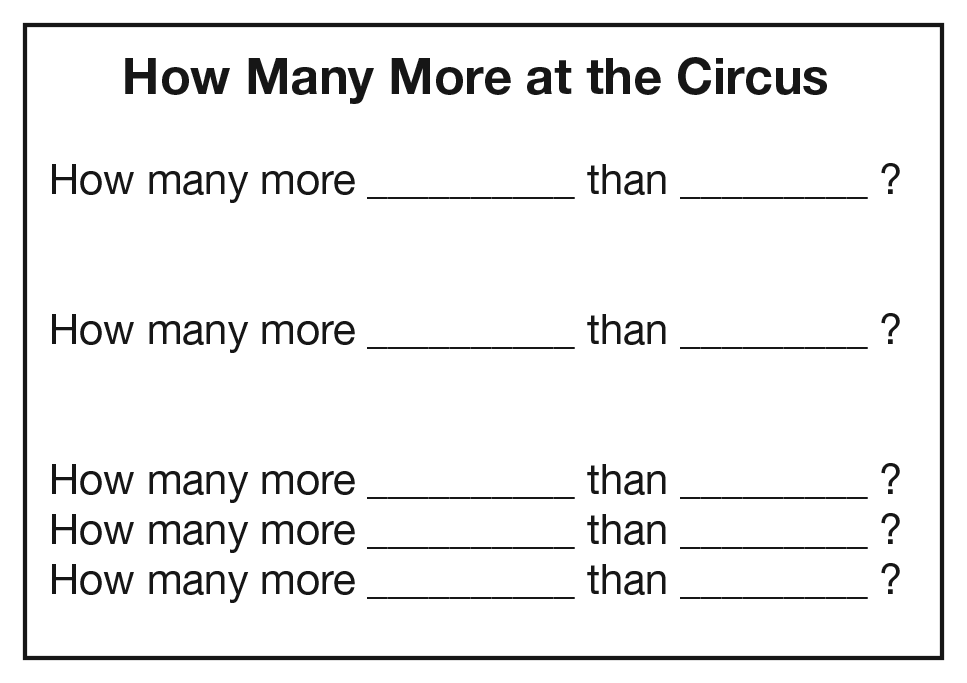Students use addition strategies to solve problems that involve a comparative situation. They use the At the Circus page to make comparisons between two sets of objects and determine how many more there are of one than the other.
Content in this Lesson
- Comparing two sets of objects.
- Finding the unknown whole number in an addition or subtraction equation relating three whole numbers [E5].
- Solving comparative word problems involving two whole numbers whose answer is less than or equal to 10 [E6].
- Adding and subtracting within 10 using invented, counting, and reasoning strategies [E7].
- Representing comparative subtraction using stories, drawings, counters, number sentences, number lines, and ten frames [E2].
- Knowing what is important to solve a problem [MPE1].
- Finding addition strategies to solve subtraction problems [MPE2].
- Solving problems a second way to check work [MPE4].
- Explaining solutions so that others can understand thinking [MPE5].
Daily Practice and Problems G–J
Assessment in this Lesson
| Assessment | Expectation Assessed | Math Practices Expectation Assessed |
|---|---|---|
| How Many More at the Circus
with Feedback Box Student Activity Book Pages 131–134 |
|
|
|
DPP Item G
Missing Numbers Teacher Guide - digital |
|
















